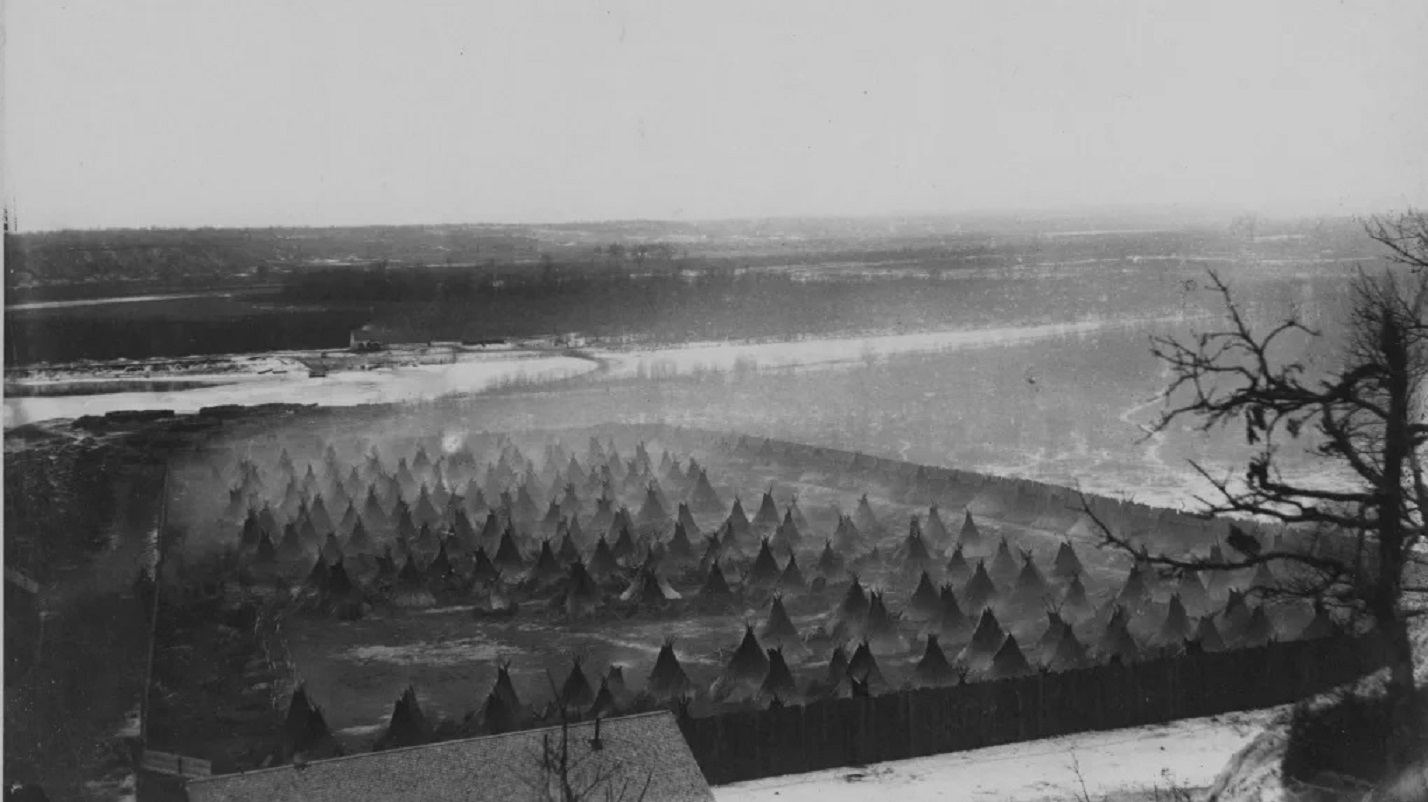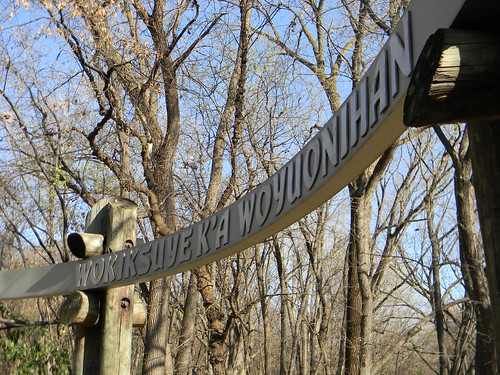 |
| Who marched atop these walls? Who built them? Who marched inside? Who sat inside as captive? |
She was desperately trying to imagine her personal story within the context of that historical landscape. She wanted to know how people with her color skin might have figured into the sweeping narrative that is the fort. She wanted to know what this place meant to her today, the impact and implications it has had on who she is, where she stands in American society and how American society sees her.
The administrator did come around to the answer she wanted: "The first soldiers stationed at the fort built it." She did coax out of him the fact that no slave labor built the original walls of Fort Snelling. But only after goading. And with that cold answer, the site lost much of its potential meaning for her. She was not given the opportunity to care. She was not given a moment to see herself in that place.
My blood boiled; it always does when things like this happen. It's why people don't like visiting historic sites along with me anymore. I start stewing with every missed meaningful connection I see.
So, how do you make Fort Snelling relevant? Where is that deeply meaningful story? How can you overcome the fact that black hands did not lift stones into place to build that fort and still make this place relevant to this one particular woman?
 |
| Military executions are commonplace in Civil War narratives, but the largest mass execution in U.S. history happened in 1862, when the U.S. Government hanged 38 Dakota Indians. |
In 1862, the Dakota people (part of the Great Sioux Nation) noticed that Minnesota had been drained of its male population. Men from every walk of life in the newly minted western state had struck eastward, heading to the fertile farmlands of Virginia and the silt-doused banks of the lower Mississippi valley to reap a harvest far different than the one they had pulled in years past from the fields around St. Paul. In the army, these men would sow and reap death and destruction in a war begun because of one concept: slavery. That one odious word holds so much power. The image of whips and cotton fields, of bleeding scarred sable skin and hounds baying in a dark wood immediately leap to mind when that simple word is uttered. It is the ultimate American evil.
The Dakota people, however, were experiencing another American evil. Their lands and livelihoods had been systematically chipped away by unbalanced treaties with white settlers from the east, until they were left with a thin strip of farmland running across Minnesota. For a people who thrived off of a physical connection to the sacred land, being separated from their holy ground was the greatest of injustices. Boxed in, but seeing the opportunity afforded by the strong and able-bodied white fighters being a thousand miles away, the Dakota seized the initiative. They rose up in rebellion and attempted to seize their lands back. They failed, but not before over 600 men, women and children had been killed on both sides. White Minnesotans lay dead in the dust in the fall of 1862.
In fields in Maryland, white Minnesotans lay wounded and bleeding. The fruits of their suffering was a transformation of the goal of the war. Those soldiers in blue suits now would march to free 4 million held in chains, prisoners in a brutal system of oppression. Lincoln declared that, "the executive government of the United States, including the military and naval authority thereof, will recognize and maintain the freedom of," the former slaves, "and will do no act or acts to repress such persons, or any of them, in any efforts they may make for their actual freedom." The Federal soldier was now marching explicitly for freedom.
 |
| Looking at this photo of the internment camp, it is hard to not draw comparisons to the horrors of Andersonville. |
As a culture, we often flatly look at the Federal cause during the war as wholly just. Lincoln becomes a great emancipator, free from any fault thanks in no small part to a bullet fired by John Wilkes Booth. But in 1862 and 1863, just as an American revolution in thought and definitions of freedom was taking place in the halls of Washington and the sea islands of the Carolinas, another race of people stood behind barricades erected by Lincoln's troops. The Dakota's freedom was stolen from them by forces dressed the same as those marching to preserve the freedom of the slave.
The war was about freedom. But so often in America, our struggles for the freedom of one group ignore completely the plaintive cries of another. The American story is one of piecemeal progress. We take slow steps, grasp at handholds and toeholds as we climb the peak to a more perfect union. But, we can only keep climbing toward a land where all are truly forever free.
The American dream is one of fits and starts, not a smooth line of progress. It has been a very bumpy road. We can only endeavor to make it a little smoother. That's the meaning which lies at the heart of Fort Snelling.
 |
| Descendents return to Fort Snelling to commemorate their ancestors' struggles at this monument inscribed with the words, "Remembering and Honoring." |
No comments:
Post a Comment